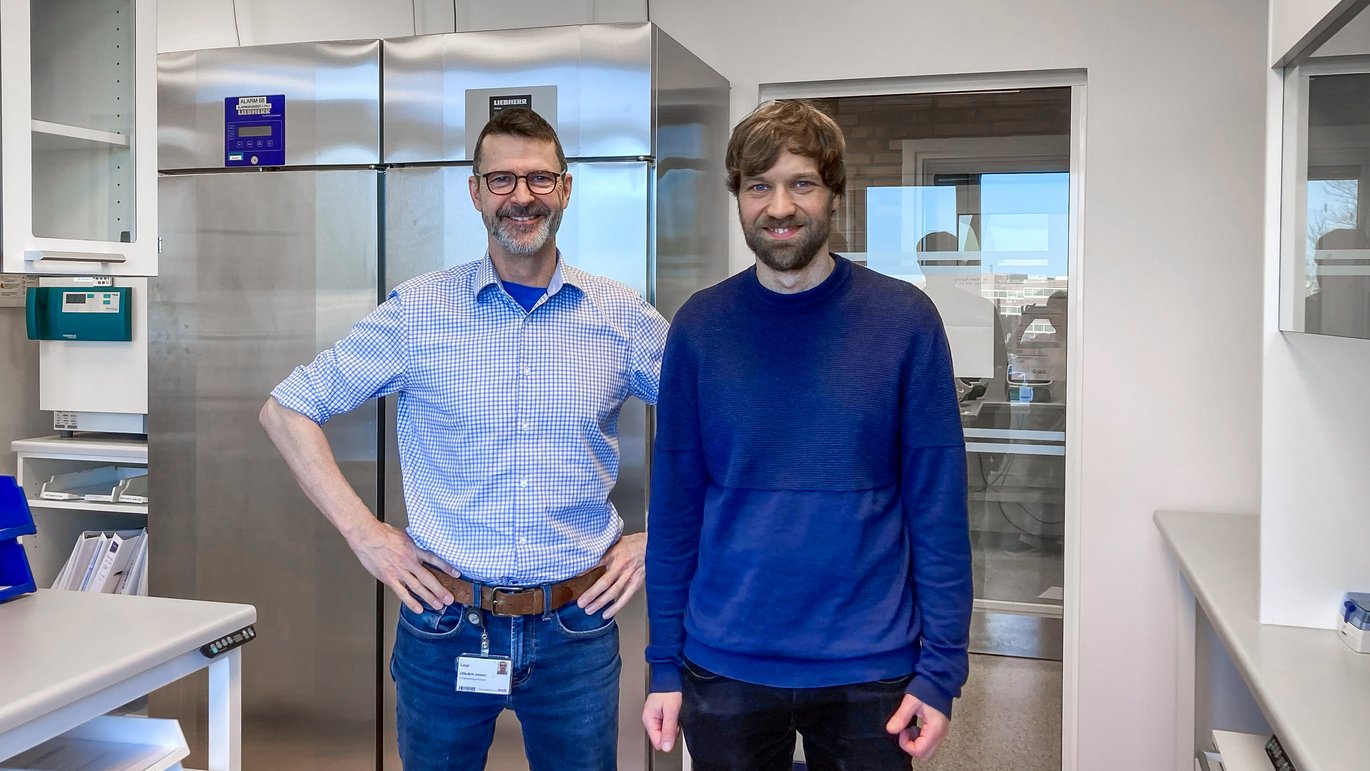Study could pave the way for better diagnosis of rare genetic diseases
Using groundbreaking CRISPR technology, a team of Danish researchers has activated genes in easily accessible cells, which could revolutionize the understanding and diagnosis of genetic diseases.

CRISPR activation
CRISPR stands for "Clustered Regularly Interspaced Short Palindromic Repeats" and is a technology that enables editing parts of the genetic material by precisely cutting and modifying DNA sequences.
The technology consists of the Cas9 enzyme, which acts as a kind of molecular scissors capable of cutting the DNA, and guide-RNA, which directs Cas9 to the specific part of the DNA that needs to be cut.
CRISPR activation is a technique that uses CRISPR technology to increase or "turn on" the activity of specific genes without changing the DNA sequence itself.
It works by attaching a so-called transcription activator to an inactive form of Cas9 and using guide-RNA to target specific gene locations. In this way, CRISPR activation stimulates the expression of the selected gene.
There are over 7,000 different rare genetic diseases, and often it can be a significant challenge and take a long time to receive a correct diagnosis.
However, a new Danish study may be a step towards faster and more efficient diagnosis of these diseases, which can affect all parts of the body.
In the study, published in The American Journal of Human Genetics, researchers have used so-called CRISPR technology to activate genes in easily accessible cells such as skin or blood to measure whether messenger RNA is correctly assembled in a biological process known as splicing.
And this is an important advance, as 19 percent of disease-associated genes are "inactive" in readily accessible tissues such as skin cells and blood cells.
"This means that until now, we have not been able to properly investigate the genes because they are only active in specific tissues, such as the nervous system, and this is a major obstacle when it comes to understanding whether a particular gene variant is the cause of a patient's disease," explains Uffe Birk Jensen, Clinical Professor, Chair and consultant at the Department of Clinical Medicine at Aarhus University and Aarhus University Hospital..
Activating inactive genes
This is where so-called CRISPR activation comes into the picture as a potentially revolutionary solution.
This technique allows researchers to "turn on" genes that are normally inactive in easily accessible cells like skin and blood.
In collaboration with Associate Professor Rasmus O. Bak at the Department of Biomedicine, it was possible to activate the MPZ gene, which is normally only active in the insulating layer of nerve pathways. The researchers behind the current study have thus shown how this gene can be activated in skin cells, and this can provide new opportunities to analyze, diagnose, and understand genetic diseases.
"With CRISPR activation, the gene can be turned on in a natural environment. There's no need for gene modification in cell models; one can simply take a sample from the patient. The same method can be used for different patients and easily adapted to other genes, and the advantage is that it's very fast with the possibility of results within a few weeks," explains Uffe Birk Jensen.
Difficulty in identifying the cause of symptoms
One of the major challenges in diagnosing rare genetic diseases lies in their complex and often hidden nature.
These diseases can be caused by a wide range of genetic variants, many of which are rare or unique to the individual patient.
This makes it difficult to identify the specific cause of a patient's symptoms, and until now, the process has required extensive genetic analyses and time to compare the patient's genetic makeup with known disease patterns.
Moreover, many of the affected genes are not active in common test tissues like blood and skin, making it even harder to get a clear picture of the genetic basis of diseases.
This situation prolongs diagnostic processes, extends the uncertainty of patients and families, and delays the start of appropriate treatment.
Exploring broader application of the technique
With the new method, researchers hope to pave the way for more effective, accurate, and accessible diagnosis of genetic diseases.
"We are already working on introducing the new technology as a diagnostic method in the clinic. In this way, the technology can contribute to making the right diagnosis when we find possible splicing variants," says Thorkild Terkelsen, postdoc at the Department of BIomedicine and co-author of the study. He adds that the research team is already exploring the broader potential of the method.
"We will, among other things, validate a larger panel of genes to see how the technique can be expanded and make adjustments so the technique becomes even easier to use in the clinic."
Behind the research
Study Type: Translational Research
External Funding: The Independent Research Fund Denmark
Collaborating Partners: Department of Clinical Genetics and MOMA, Aarhus University Hospital
Link to the scientific publication: https://doi.org/10.1016/j.ajhg.2023.12.024
Kontakt:
Clinical Professor and Consultant Uffe Birk Jensen
Aarhus University, Department of Clinical Medicine and Aarhus University Hospital
ubj@clin.au.dk
Phone: +45 78455504
Postdoc Thorkild Terkelsen
Aarhus University, Department of Biomedicine
thorkild.terkelsen@biomed.au.dk
Phone: +45 51263710